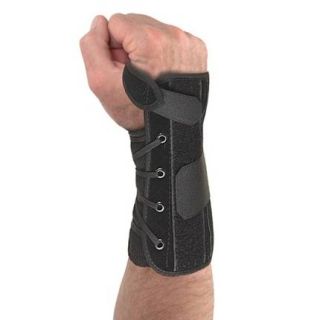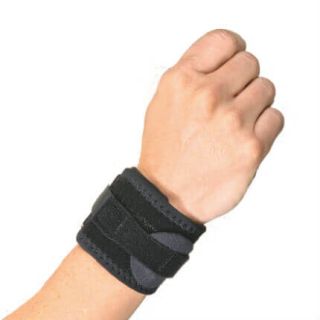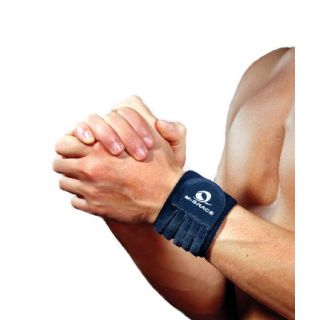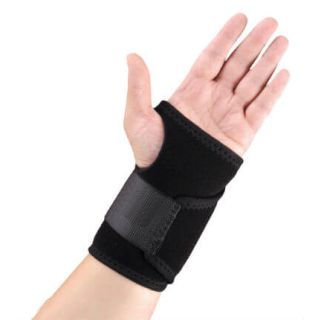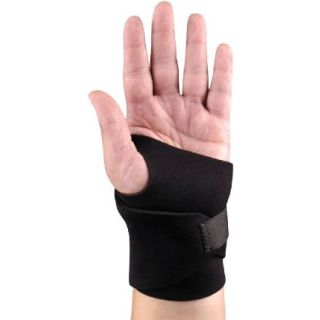Safeguarding Performance: The Crucial Role of Wrist Braces in Volleyball
Volleyball is a dynamic and physically demanding sport that places significant stress on various parts of the body, including the wrists. Players engage in rapid movements, powerful hits, and precise ball handling, making wrist injuries a common concern. In response to this, volleyball wrist braces, wrist support, and wrist braces specifically designed for volleyball have become essential accessories for players. This essay aims to delve into the importance of these wrist protection tools, exploring their role in injury prevention, performance enhancement, and overall well-being in the world of volleyball.
The Wrist's Vital Role in Volleyball:
1. Ball Handling and Passing:
The wrists play a crucial role in volleyball, particularly in ball handling and passing. Whether setting the ball, executing a powerful spike, or making precise digs, players heavily rely on the flexibility and strength of their wrists. The repetitive nature of these motions can lead to overuse injuries and strain on the wrist joints.
2. Impact of Powerful Hits:
Powerful hits, such as spikes and serves, generate considerable force that is transmitted through the wrists. The impact can lead to sprains, strains, and even more severe injuries if not adequately addressed. Wrist injuries not only affect a player's performance but can also sideline them from the game during recovery.
The Role of Volleyball Wrist Braces:
1. Injury Prevention:
Foremost among the reasons volleyball players use wrist braces is injury prevention. Volleyball wrist braces act as a protective barrier, providing stability to the wrist joint and reducing the risk of sprains, strains, and hyperextension. By offering support during the demanding movements of the game, wrist braces play a crucial role in mitigating the impact of repeated stress on the wrists.
2. Tendon and Ligament Support:
Volleyball wrist braces are designed to provide targeted support to the tendons and ligaments surrounding the wrist joint. This support helps alleviate stress on these structures, reducing the likelihood of overuse injuries and offering a measure of relief for players dealing with existing wrist conditions.
3. Rehabilitation and Post-Injury Support:
Players recovering from wrist injuries or undergoing rehabilitation often turn to wrist braces for additional support. The compressive nature of these braces aids in reducing swelling, promoting blood circulation, and facilitating the healing process. Volleyball wrist braces become instrumental in the gradual return to the game, offering stability during the recovery phase.
Wrist Support for Volleyball: Types and Features
1. Adjustable Compression Wrist Straps:
Adjustable compression wrist straps are a common type of wrist support used in volleyball. These straps wrap around the wrist and can be tightened or loosened to provide the desired level of compression. They are effective in promoting circulation, reducing swelling, and offering support without restricting movement.
2. Neoprene Wrist Sleeves:
Neoprene wrist sleeves are popular for their flexibility and heat retention properties. These sleeves slip over the wrist, providing mild compression and warmth. Neoprene wrist sleeves are suitable for players seeking support during play while maintaining a full range of motion.
3. Stabilizing Wrist Braces:
Stabilizing wrist braces are designed with rigid support structures to limit excessive movement and provide maximum stability. These braces are often recommended for players recovering from more severe wrist injuries or those prone to chronic instability. Stabilizing wrist braces strike a balance between support and mobility.
Considerations for Volleyball Players:
1. Proper Sizing and Fit:
Selecting the right size and ensuring a proper fit are crucial when choosing volleyball wrist braces or wrist support. Ill-fitting braces may not provide the necessary support and can potentially cause discomfort or hinder performance. Players should follow manufacturer guidelines for sizing and consider their individual wrist dimensions.
2. Breathability and Moisture Management:
Volleyball is an intense sport that often leads to increased perspiration. Choosing wrist braces or supports with breathable materials and effective moisture-wicking properties is essential to prevent discomfort and skin irritations during play. Proper ventilation ensures that players can focus on their game without distractions.
3. Freedom of Movement:
While support is paramount, volleyball players also value wrist braces that allow for a full range of motion. Wrist braces should provide the necessary stability without restricting movements crucial for ball handling, setting, and spiking. Finding a balance between support and freedom of movement is key for optimal performance.
In conclusion, volleyball wrist braces, wrist support, and braces designed specifically for volleyball serve as vital components in the arsenal of players seeking to safeguard their wrists and enhance their performance. The wrists' critical role in ball handling and the impact of powerful hits make protective measures imperative in preventing injuries and promoting overall well-being. The variety of wrist support options available allows players to choose based on their specific needs, whether it be injury prevention, post-injury support, or enhanced stability during play. As volleyball continues to be a popular and competitive sport, the importance of wrist protection tools becomes increasingly evident, ensuring that players can fully engage in the game while minimizing the risks associated with the demands of this dynamic sport.
Frequently Asked Questions:
Can you wear a wrist brace in volleyball? Yes, these volleyball wrist braces have been chosen by our staff to provide effective support in a low-profile design with minimal bulk.
Is there a wrist brace for volleyball servers? These wrist braces for volleyball players can be used for serving, setting, and spiking moves.

